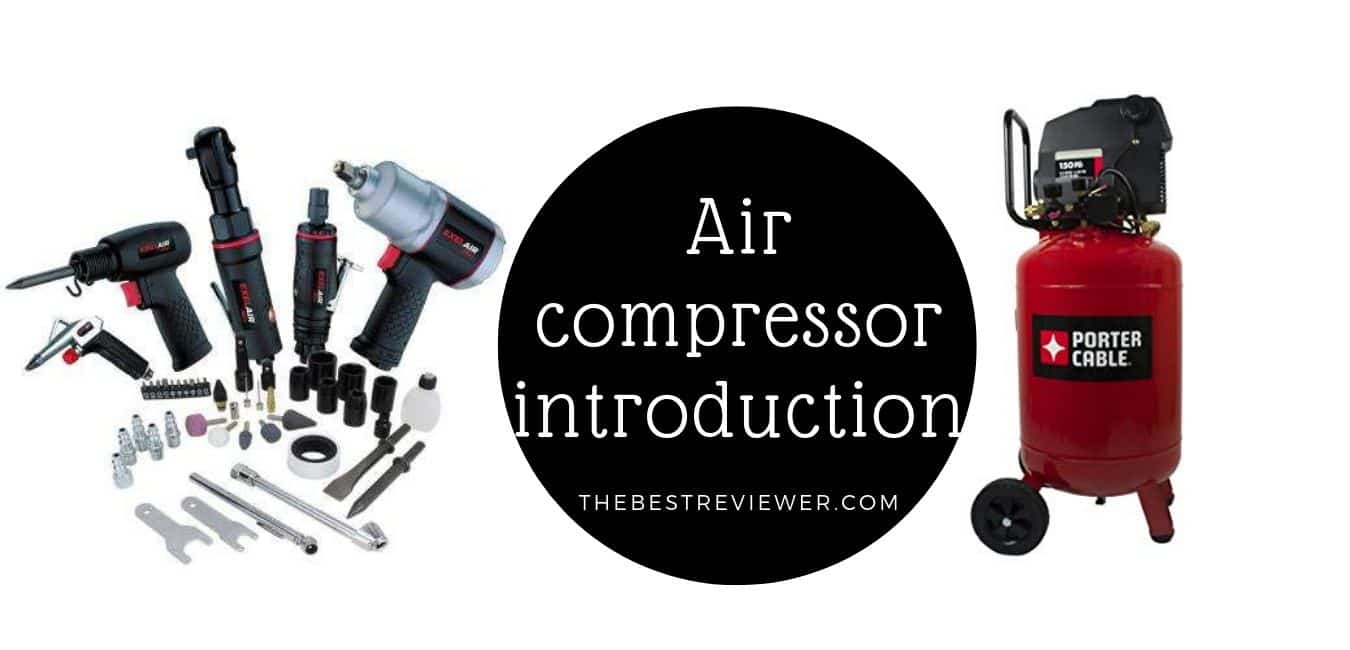Professionals have been using pneumatic tools for a long time. DIY users have often avoided pneumatic tools. Electric tools have been the normal choice for tasks around the house. But often a pneumatic tool can be a better solution.
Of course, you need an air compressor in order to be able to use pneumatic tools. Small air compressors are fairly cheap nowadays and they don’t require much maintenance.
You have a wide variety of air compressors on the market. For DIY tasks, a small electric air compressor is the best choice. They are fairly cheap and easy to use. Although it may sound better to buy an oil-free air compressor, they are generally not as good as oil compressors.
Actually, the name oil-free is a bit of a misnomer, many so-called oil-free air compressors use oil. But you don’t have to worry about changing the oil. Some oil-free air compressors use Teflon-coated cylinder sleeves and piston rings, eliminating the need for oil.
If you are going to use the air compressor a lot, an oil-free air compressor is not recommended. They are less powerful and not as durable as the oil-based air compressors. But oil-free air compressors are lightweight and cheap.
As mentioned earlier, air compressors come in a lot of shapes, sizes and forms. You have a lot of different values to choose from when comparing and evaluating air compressors.
Horsepower, HP, is often mentioned on the specification. The horsepower specified refers to the motor of the compressor. The HP value says nothing about the amount of air the compressor produces.
Decibel, db, tells you how loud the air compressor is. Obviously, the lower value, the quieter the air compressor is. But like the HP value, the db value does not tell you how powerful the compressor is. But it is worth paying attention to the decibel value, you may want to buy a reasonable quiet compressor.
The most important value on the specification is the CFM, Cubic Feet per Minute, which tells you how many cubic feet of air the compressor can generate. But the CFM value is only half the story, you also need to know at what pressure the CFM value is measured at.
This you get from the PSI, Pond per Square Inch, value. When you check the requirement for a pneumatic tool, you generally get the CFM requirement at specific PSI, often 90 PSI is used.
By knowing how many CFM at a specific PSI your pneumatic tool requires, you can check if an air compressor is powerful enough for your needs.
Note that the CFM and PSI values are not applicable in all cases. Some pneumatic tools require compressed air on a continuous basis, for example grinders, while other are only used for short periods, for example nailers.
The latter kind of tools doesn’t put as much strain on the air compressor as the tools that need compressed air on a continuous basis. One rule of thumb is to multiply the CFM requirement by four for tools using air on continuous basis.
Contents
Pneumatic Tool Overview
Most people are happy to use electronic tools but pneumatic tools are less popular. Most people think that pneumatic tools are just for professionals, they are too complicated to use.
But pneumatic tools are not more difficult to use than electric tools. But you need of course an air compressor in order to use pneumatic tools.
Fortunately, you can buy a good air compressor without paying much. Air compressors are easy to use and don’t require much ongoing maintenance. Most pneumatic tools designed for tasks around the house don’t put too much strain on an air compressor.
Some tools are available both in pneumatic and electric versions, while others have no electric rivals. Here are some examples of useful pneumatic tools for DIY tasks
Nailer or Nail Gun –
Nailers come in many versions but for DIY tasks, a pneumatic nailer is the best solution. The so-called Brad Nailer has replaced the hammer as the preferred tool for trim work. A nail gun does the work much faster than a hammer. If you are doing a lot of trimming, a nail gun will be a sound investment.
Airbrush and Spray Gun –
Airbrushes are used for a lot of different purposes, not just DIY. The larger spray gun is often a faster solution for painting larger areas. Both the airbrush and spray gun are excellent tools, saving you a lot of time.
Impact Wrench –
The pneumatic impact wrench has come under fire from the electric impact driver. For DIY tasks, the electric impact driver is generally a better choice than a pneumatic impact wrench. But if you need a heavy–duty impact wrench, a pneumatic version is the way to go.
Grinder, Polisher and Sander –
These tools are generally powered by compressed air or electricity. The pneumatic tools can be made smaller and lighter than the electric versions. This makes them very popular amongst professionals who are using the tools for a long time. But the prices are generally cheap, making them also suitable for non-professionals.
You have a lot of other pneumatic tools but they are often large and expensive. They are mainly meant for commercial use. Pneumatic drills for example are extremely powerful but for tasks around the house an electric drill is good enough.
Not only are these powerful pneumatic tools expensive, they also require a powerful air compressor. For DIY use, really powerful air compressors are far too expensive and too large.

